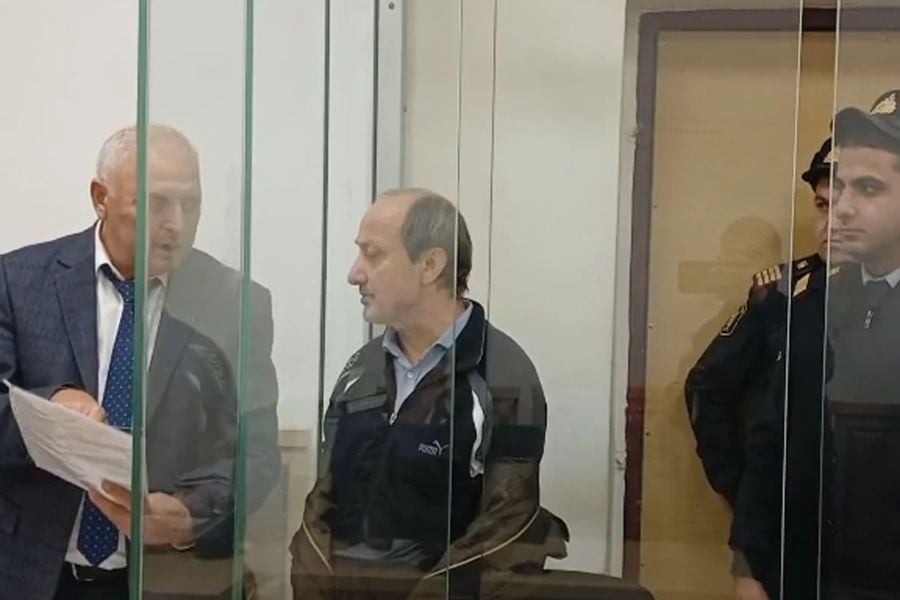Op-Ed: what Turkish-Azerbaijani military exercises in Nakhchivan mean for Armenia
The armed forces of Azerbaijan and Turkey are conducting joint large-scale exercises for both the ground and air forces of both countries. They started on July 29 and will end on August 10. The exercises were held in Baku, Ganja, Kurdamir, Yevlakh, as well as Nakhichevan, in the immediate vicinity of the southern border of Armenia.
It is worth noting that the exercises are being conducted following the recent escalation on the northeast border between Azerbaijan and Armenia.
Former adviser to the Armenian defense minister, military expert David Jamalyan, sat down with JAMnews to explain the significance of the Turkish-Azerbaijani military exercises in Nakhichevan for Armenia.
• Life on the Armenian-Azerbaijani border from Soviet times to the present day
• New factory attempts to reduce unemployment in Armenian village near border with Azerbaijan
Turkish-Azerbaijani tandem forces against Armenia
In recent years, the collaboration between Turkey and Azerbaijan has turned Nakhichevan into a springboard for aggression against Armenia, and the joint exercises only serve to demonstrate this.
Turkey is deliberately emphasizing its military presence in Nakhichevan, to the point that there are already discussions about building a Turkish military base here. And this poses a threat not only to Armenia. Strengthening Turkey’s influence in the region will also affect the national interests of Russia and Iran.
If Turkey becomes a more active force and consequently, Russia loses influence in the South Caucasus, destabilization of Russia’s southern borders will follow, which is, in fact, in Turkey’s interest.
Russia’s southern borders will neighbor the aggressively-minded Turkey, which will have veiled territorial claims against Russia in the form of support for separatist forces and quasi-state entities with an Islamic and Turkish bias on its territory. Russia will lose its influence in the region, and Turkey will gain influence in return.
Under the guise of these joint exercises, Turkey is introducing a military contingent and equipment to Nakhichevan, and the big question is whether it will withdraw them after the exercises. Moreover, it can concentrate both a significant number of personnel and military equipment, and withdraw dummy versions.
But Turkey must take into account the strength of Armenia in the context of its strategic alliance with Russia, whose joint efforts are quite capable of preventing an unfavorable scenario for itself.
Incidentally, Russia has already reacted to the joint Turkish-Azerbaijani exercises, announcing, in turn, extraordinary military exercises in the southwest, in the Caspian and Black Sea zones. Within the framework of these exercises, Armenia will also be able to participate.
This is a very important point. This is a prompt and very powerful reaction, confirming the thesis that Armenia and Russia’s strategic interests coincide.
Today the Armenian-Azerbaijani border is calm, and the Armenian army is in control of the situation. Both Armenia and Russia are closely following what is happening in Nakhichevan, and the Turkish side is well aware of this and taking it into account.
Turkey understands that transforming the military exercises into actions against Armenia will entail extremely painful consequences.
The significance of Nakhchivan
Despite the fact that de-jure Republic of Nakhchivan is under the jurisdiction of Azerbaijan, de facto, this territory, both economically and militarily, is integrated with Turkey, and is therefore its exclave state. This region is separate from the main territory of Azerbaijan and borders on Armenia, Iran and Turkey.
It is very important for the Turkish-Azerbaijani collaboration to connect Nakhchivan with the territory of Azerbaijan. But this is a direct threat to the territorial integrity of both Armenia and Artsakh. To implement this project, the Turkey and Azerbaijan must occupy the Syunik region of Armenia and the southern regions of Nagorno-Karabakh.
It should be noted that this prospect is by no means desirable for Russia. It also poses a direct threat to Iran’s national interests. In this way, the territory would be torn away from Armenia, and the northern border of the Islamic Republic would be under the full control of the Turkish-Azerbaijani forces, as well as those globalist forces that stand behind them.
Azerbaijan is the second Turkish state formation. It is believed that in 1918 it was created in order to legitimize claims to the north of Iran. And these claims are a real threat to the territorial integrity of Iran.
The Armenian forces are strong enough to cope with the aggression on the border with Azerbaijan. The allied force of Russia is only needed with regards to Turkey, especially on the border with Nakhchivan. On the western borders of Armenia, the presence of Russian border guards and 102 military bases will prevent Turkey from showing aggression. Any blow can be expected to be dealt from the territory of Nakhchivan.
Turkey may become involved in this conflict in several different ways. There are not only the regular troops that can be deployed into the Azerbaijani contingent and strike under the guise of the Azerbaijani army. Terrorist forces as part of the Azerbaijani special forces may also be involved.
But the Armenian bases in this area are quite strong and Russia’s contribution will, obviously, also be significant. If a blow is dealt or some kind of escalation occurs from Nakhchivan, it will be perceived as a blow from Turkey. Which will entail the following consequences.
The union treaty between Armenia and Russia will manifest itself in practice – and in different forms, including the involvement of the Russian contingent in hostilities.
But for now, everything is calm, and the Armenian side is in control of the situation. In general, the armed forces of Armenia are on full alert.
Azerbaijan has not learned its lesson
After the escalation in April 2016 on the contact line in Nagorno-Karabakh, when the Artsakh Defense Army was fully ready for a counteroffensive, Azerbaijan had to very soberly assess the potential and determination of the Armenian side.
In response, Russia held military exercises in Dagestan, which also acted to sober Azerbaijan.
The Four-Day War in 2016 quashed any initiative Aliyev had surrounding Karabakh. After this escalation, it became clear that any aggression they initiated would come back to bite them. The April hostilities are evidence that Aliyev was not well-informed about the real balance of forces, the combat readiness of both the Artsakh Defense Army and its own armed forces. He passed his own delusions and desires off as reality.
But Azerbaijan tried to go down this well-worn path again in 2020, directly on the border with Armenia. The country tried to use the language of force to dictate its conditions during the negotiation process, securing the right to conduct сoersive diplomacy. And this attempt once again failed.
In response to the unprovoked aggression from Azerbaijan, Armenia took the initiative and improved its military position in this area.
Azerbaijan suffered losses – of combat posts, equipment, and special forces servicemen.
Each act of aggression seriously aggravates the position of Aliyev and his allies. Combat losses have the potential to destabilize. This is an additional impetus driving the destabilization in Azerbaijan and the feelings of public unrest and protest.
The terms, place names, opinions and ideas expressed in this publication do not necessarily coincide with the opinions and ideas of JAMnews or its individual employees. JAMnews reserves the right to remove comments on posts that are deemed offensive, threatening, violent or otherwise ethically unacceptable.



















